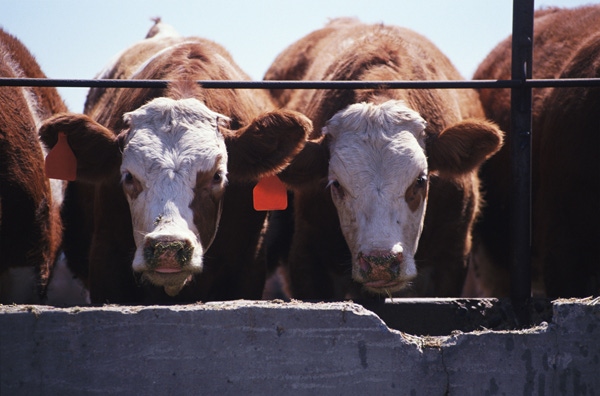
Structural soundness is an important characteristic when choosing a breeding bull.A herd with two bulls could have a dominant sire that is knocking off the younger bull from breeding resulting in a lower pregnancy rate.Cattle producers should not administer injections anywhere in the rear portion of the animal since that is where the highest value cuts are located.
February 29, 2012

Beef producers don’t want to miss out on profit potential when it comes to selection and performance of breeding bulls, according to a Texas AgriLife Extension Service beef cattle specialist.
Dr. Jason Cleere, AgriLife Extension beef cattle specialist in College Station, provided management tips for breeding bulls at the 50th Blackland Income Growth Conference in Waco.
Structural soundness is an important characteristic when choosing a breeding bull, Cleere said, because a bull takes on a lot of stress servicing a herd of cycling cows. If a bull with poor physiological traits is chosen, “that bull will only last a couple of years instead of five years,” Cleere said.
Fertility testing replacement bulls is another recommendation.
“Examining testicles for size and shape – this stuff comes down to a veterinarian and the breeder sorting out the bulls that do not meet these specifications,” he said.
Cleere told the audience that breeding-soundness evaluation will involve a veterinarian evaluating bulls for scrotal circumference and semen evaluation.
“Also, every year you should get your bull evaluated before turnout,” Cleere advised. “If you have a single herd sire, you could wind up with no calves (by not having a test performed).”
Cleere said it’s also possible that a herd with two bulls could have a dominant sire that is knocking off the younger bull from breeding resulting in a lower pregnancy rate.
One herd involved in the AgriLife Extension Beef Partnership in Education Program had a 10-year-average pregnancy rate of 70 percent. Proper fertility testing of the herd bulls and culling of those that failed resulted in an 81 percent pregnancy rate this past fall, Cleere said.
A good, general rule of thumb is to have one bull to every 25 or 30 cows, Cleere said.
Dr. Floron “Buddy” Faries, AgriLife Extension state veterinarian, provided health management tips for cattle producers at the conference. He discussed common mistakes, such as using only a portion of a medicine bottle and refrigerating what is left.
“Discard any unused portions,” he said. “You will get vaccination failure. The remaining contents in the bottle will deteriorate and cause a tissue reaction because you are using decayed, deteriorating vaccine.” Faries said it is critical that producers completely read the labels and other instructions enclosed in packaging.
“If I put a fresh bottle of LA 200 in the refrigerator, it’s no good,” he said. “Why? It says on the label to store at room temperature. You can cause a reaction in the tissue if it’s used on the animal. You also need to make sure that no light gets to it or it will diminish its effectiveness.”
Faries discussed injection-site blemishes on beef cattle. He stressed that producers should not administer anywhere in the rear portion of the animal since that is where the highest value cuts are located.
Instead, Faries said to move to the front shoulder region of the animal for either intramuscular or subcutaneous injections. The injection should be under the skin as this area will be trimmed out when harvested.
“Also, move over 2 inches before giving another vaccination,” he added. Faries said this will prevent cross-contaminating vaccines and potential tissue reaction. He also advised producers to use one needle when drawing medicine from the bottle and to change needles every 10 animals.
You May Also Like



